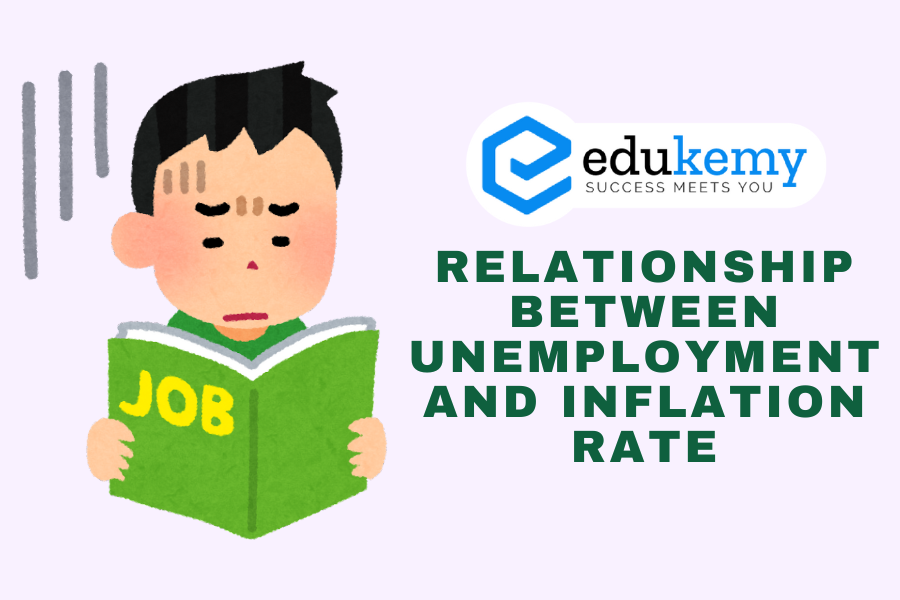
The relationship between unemployment and inflation rate is a fundamental concept in macroeconomics, central to understanding the dynamics of an economy. This relationship, often depicted by the Phillips Curve, illustrates the inverse correlation between these two key economic indicators. Unemployment refers to the percentage of the workforce that is actively seeking employment but unable to find jobs, while the inflation rate represents the percentage increase in the general price level of goods and services over a period of time. Understanding how changes in one variable impact the other is crucial for policymakers, economists, and businesses alike, as it can have profound implications for monetary policy, fiscal decisions, and overall economic stability. Therefore, exploring the intricate interplay between unemployment and inflation rate is essential for comprehending the broader functioning of an economy.
Contents
- 1 FAQs
- 1.1 1. How are unemployment and inflation related?
- 1.2 2. Why does low unemployment lead to higher inflation?
- 1.3 3. Can high unemployment coexist with high inflation?
- 1.4 4. How do central banks manage the trade-off between unemployment and inflation?
- 1.5 5. Are there long-term implications for the relationship between unemployment and inflation?
- 2 In case you still have your doubts, contact us on 9811333901.
Here are the key points:
- Inverse Relationship: The Phillips Curve implies that there is an inverse or negative relationship between inflation and unemployment. When inflation is low, unemployment tends to be high, and when inflation is high, unemployment tends to be low.
- Trade-Off: The curve suggests that policymakers face a trade-off between inflation and unemployment. They can use monetary or fiscal policies to influence one variable, but doing so might have consequences for the other.
- Short-Run Concept: The Phillips Curve is more applicable in the short run. In the long run, according to classical economic theory, there is no permanent trade-off between inflation and unemployment. In the long term, policymakers face a situation known as the natural rate of unemployment.
- Expectations Matter: The relationship described by the Phillips Curve is influenced by people’s expectations. If individuals expect higher inflation, they may demand higher wages, and this can influence the trade-off.
- Adaptation and Shifting: Over time, the Phillips Curve relationship can adapt, and various factors can cause it to shift. For example, changes in inflation expectations, productivity, and external shocks can alter the relationship between inflation and unemployment.
It’s important to note that the Phillips Curve concept has been subject to criticism and refinement over the years. The idea of a stable and exploitable trade-off between inflation and unemployment has been challenged, especially in the long run. Policymakers need to consider a broader set of factors and employ more nuanced strategies to manage both inflation and unemployment effectively.
FAQs
- Unemployment and inflation share an inverse relationship. When unemployment rates decrease, inflation tends to rise, and vice versa. This relationship is known as the Phillips curve, which suggests that there is a trade-off between unemployment and inflation in the short run.
2. Why does low unemployment lead to higher inflation?
- Low unemployment typically indicates a strong demand for labor. As businesses compete for a limited pool of workers, wages tend to rise. Increased wages result in higher production costs, which are often passed on to consumers in the form of higher prices, leading to inflationary pressures.
3. Can high unemployment coexist with high inflation?
- While the Phillips curve suggests an inverse relationship between unemployment and inflation, high levels of both can occur simultaneously in certain situations, such as stagflation. Stagflation is characterized by stagnant economic growth, high unemployment, and elevated inflation, presenting a challenge for policymakers.
4. How do central banks manage the trade-off between unemployment and inflation?
- Central banks often use monetary policy tools, such as interest rate adjustments, to influence both unemployment and inflation. In periods of high inflation, they may raise interest rates to cool down the economy and reduce inflationary pressures. Conversely, during times of high unemployment, central banks may lower interest rates to stimulate economic activity and reduce unemployment.
5. Are there long-term implications for the relationship between unemployment and inflation?
- Over the long term, the relationship between unemployment and inflation may vary due to structural changes in the economy, shifts in demographics, and technological advancements. Additionally, expectations of inflation play a crucial role. If individuals and businesses anticipate high inflation, it can become self-fulfilling as they adjust their behavior accordingly, potentially altering the traditional trade-off between unemployment and inflation.
In case you still have your doubts, contact us on 9811333901.
For UPSC Prelims Resources, Click here
For Daily Updates and Study Material:
Join our Telegram Channel – Edukemy for IAS
- 1. Learn through Videos – here
- 2. Be Exam Ready by Practicing Daily MCQs – here
- 3. Daily Newsletter – Get all your Current Affairs Covered – here
- 4. Mains Answer Writing Practice – here

